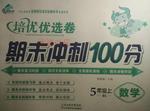题目内容
Have you ever run into a careless cell phone user on the street? Perhaps they were busy talking, texting or checking updates on WeChat without looking at what was going on around them. As the number of this new “species” of human has kept rising, they have been given a new name — phubbers(低头族).
Recently, a cartoon created by students from China Central Academy of Fine Arts put this group of people under the spotlight. In the short film, phubbers with various social identities bury themselves in their phones. A doctor plays with his cell phone while letting his patient die, a pretty woman takes selfie in front of a car accident site, and a father loses his child without knowing about it while using his mobile phone. A chain of similar events eventually leads to the destruction of the world.
Although the ending sounds overstated the damage phubbing can bring is real.
Your health is the first to bear the effect and result of it. “Constantly bending your head to check your cell phone could damage your neck,” Guangming Daily quoted doctors as saying. “the neck is like a rope that breaks after long-term stretching.” Also, staring at cell phones for long periods of time will damage your eyesight gradually, according to the report.
But that’s not all. Being a phubber could also damage your social skills and drive you away from your friends and family. At reunions with family or friends, many people tend to stick to their cell phones while others are chatting happily with each other and this creates a strange atmosphere, Qilu Evening News reported.
It can also cost you your life. There have been lots of reports on phubbers who fell to their death, suffered accidents, and were robbed of their cell phones in broad daylight.
1.For what purpose does the author give the example of a cartoon in Paragragh2?
A. To inform people of the bad effects of phubbing.
B. To advertise the cartoon made by students.
C. To indicate the world will finally be destroyed by phubbers.
D. To warn doctors against using cell phones while treating patients.
2.Which of the following is NOT a risk a phubber may have?
A. His social skills could be affected.
B. His neck and eyesight will be gradually harmed.
C. He will cause the destruction of the world.
D. He might get separated from his friends and family.
3.Which of the following may be the author’s attitude towards phubbing?
A. Supportive. B. Negative.
C. Optimistic. D. Objective.
4.What may the passage talk about next?
A. Advice on how to use a cell phone. B. People addicted to phubbing.
C. Results of phubbing. D. Measures to reduce the risks of phubbing.
 通城学典默写能手系列答案
通城学典默写能手系列答案 金牌教辅培优优选卷期末冲刺100分系列答案
金牌教辅培优优选卷期末冲刺100分系列答案

